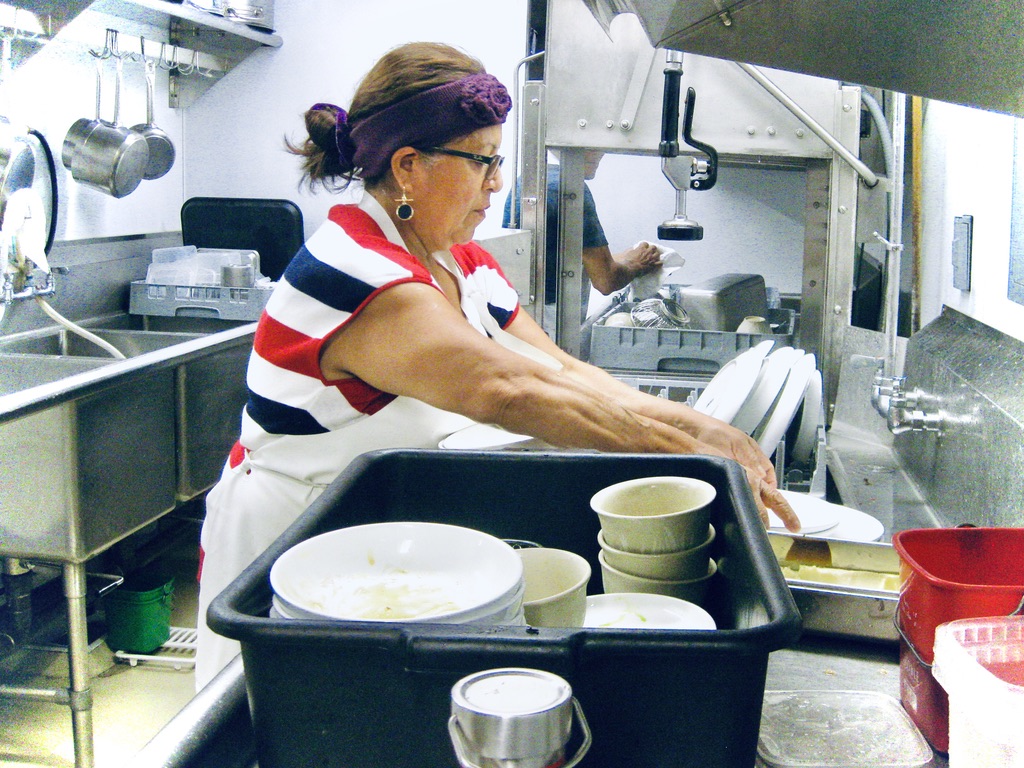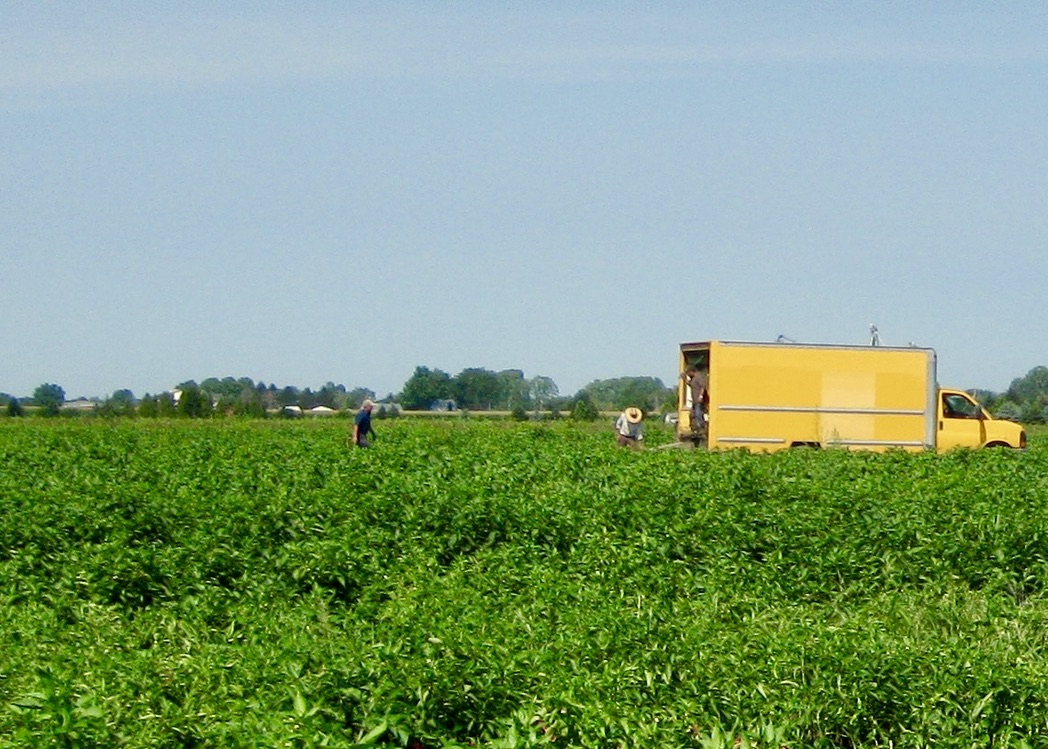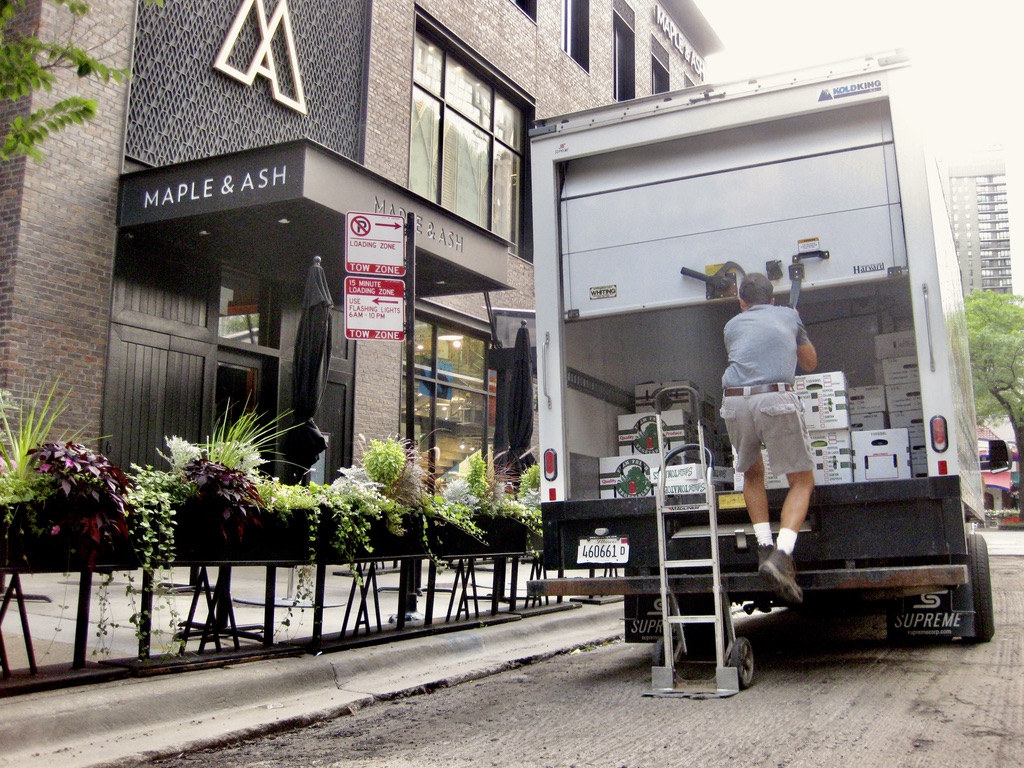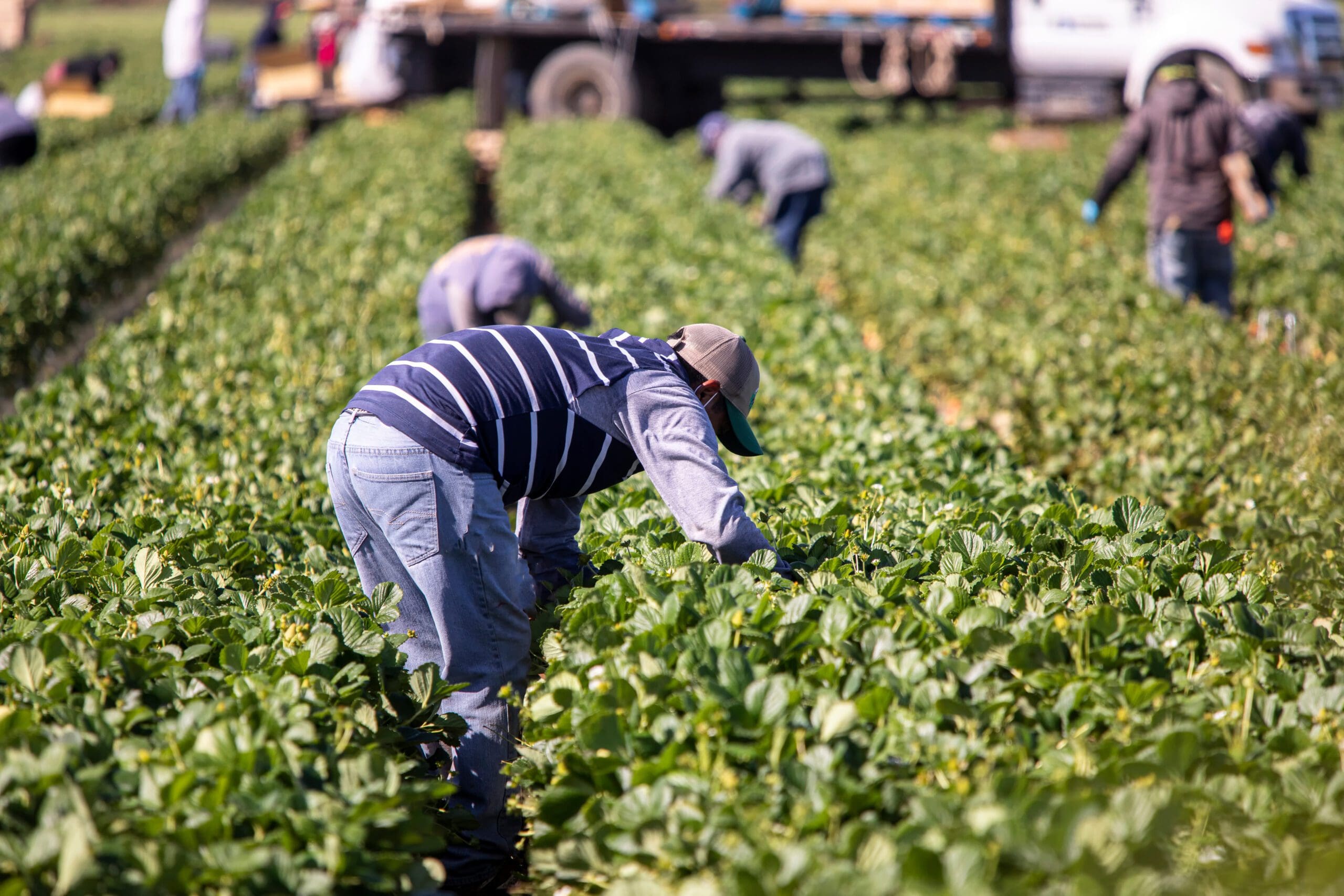The true cost of a restaurant meal
In the early days of COVID-19, the economics of the restaurant business — and the concerns of restaurant workers — burst into the mainstream. Shutdowns laid bare the precarious balance between procurement, labor, rent and menu pricing that many restaurants know all too well; reopenings inspired an upswell of public support for staff, many of whom had to choose between the safety of social distancing and their own financial security. But calls for change, which reverberated through the industry in 2020, have been less successful than some have hoped. (Diners also seem to be feeling less generous: Tips are the lowest they’ve been since the start of the pandemic.)
With his new book, “The Dish: The Lives and Labor Behind One Plate of Food,” writer Andrew Friedman wants to keep the conversation going. In the summer of 2021, as the industry was getting back on its feet, Friedman immersed himself in the workings of one Chicago restaurant: Wherewithall, a trendy spot with a rotating menu that he describes as casual but “chef-driven” (the owners, Beverly Kim and Johnny Clark, are local stars). To illustrate how the restaurant ticks, he visits its suppliers and partner farms, speaking with owners and employees about everything from pesticides to immigration. He heads to a warehouse well before sunrise and hops into a truck as its driver packs in the heavy boxes and traverses the city to deliver them. In the kitchen and the dining room, he hears from servers, cleaners and cooks about the industry’s historic ills, including low wages, long hours and tight margins, and how employers like theirs are trying to do it better.
Wherewithall has since closed — the result of a collapsed sewer line that tipped the scales toward the realm of financial implausibility. But the lesson of “The Dish” is evergreen. Friedman encourages the reader to give some thought, next time they go out, to the dishwashers, bussers, drivers, logistics managers, meatpackers, vintners, farmworkers and others who make up this sector of our food chain: People that diners may not think of as inhabiting the “restaurant world,” but who make it run nonetheless.
We spoke with the author about his reporting, what diners often misunderstand about the restaurant industry and how the choices we make can create demand for better practices. This interview has been edited for length and clarity.

What do you think might surprise readers about how the restaurant industry works?
One frustration I hear from a lot of independent restaurants who have committed to a certain level of ingredient is customers will come in, look at the menu and say to them, “How come your salmon dish is 35, but the place right down the street, it’s only 22?”
If you’re noticing a significant discrepancy between two restaurants in your area — who seem to be pitched at roughly the same level of formality, or to be offering very similar compositions in terms of what the menu items are — and the prices seem out of whack, it’s more likely than not that the higher priced one isn’t trying to gouge you. A restaurant whose prices are 50 percent higher than what looks, to the non-industry, to be a similar restaurant two blocks down the road — that’s not a competitive advantage, right? So why are they doing it? It’s probably got to do with what kind of food they’re sourcing and what they’re providing to their staff in terms of salary and benefits.
You know, I often get into conversations with chefs about some aspect of the restaurant business, and at some point, I always end up saying, “So this just comes down to money, right?” They say, “Yeah, if we were charging substantially more than we charge, we could do a lot of things differently.”
It seems restaurants are having to contend with some expectation, from diners, of affordability. What might be behind that?
I think restaurateurs have kept prices artificially depressed for a long time, for whatever reason. And there are journalists who do make a point of focusing on price — those kinds of articles have existed forever. Then there’s this notion of, “Oh, it’s only X, it can’t cost that much for this kind of food.” I’ve heard Chinese American chefs complain about this, Korean American chefs. I think everything I just described all works like a perfect storm of not-ideal messaging, assumptions, history, resistance, and I just think it all adds up. But again, I don’t really fault the consumer.
The restaurant industry has lived in fear for a very long time of price resistance, of raising their prices. Customers are already balking sometimes, and their prices should probably be significantly higher. At some point, and I feel like we’re sort of getting there quickly, there’s going to be a breaking point. Something has to give. Early in 2020, when the lockdown happened, a lot of chefs and restaurateurs all of a sudden had more time off than they ever had or ever wanted. There was a lot of talk in the industry about the notion of a “reset.” But that reset didn’t happen, really, in any industry-wide way.
A lot of restaurants started, as a middle ground on the way to having no tipping, just having an automatic service charge, right? Or something like this. And even that causes a lot of pushback amongst customers. The irony of course is, during the height of the pandemic, when restaurant workers were deemed essential workers, everybody was so grateful even to be able to have an order brought out and put in the trunk of their car, with no human contact. But as soon as things started to resemble normal again, I feel like that interest and that sympathy — it just went out the window.
I don’t think most people out there, and to me it’s totally understandable, come to a restaurant to be educated about these things. But I wish the public was more interested in knowing more. A lot of this piece of it is, if restaurants could survive a price hike, I think they would all do it.

Going back to what you said about sourcing, those different pricing structures are often related to different practices, supply chain differences?
Well, there’s the difference in the actual foodstuffs, right? I mean, everything from olive oils to salts to the proteins and the produce. There are a lot of restaurants that source, and I’m not even saying this is necessarily a bad thing, but from larger companies. Stuff that isn’t necessarily grown, raised, fished anywhere near where they are. With deregulation, there’s stuff that gets cheaper and cheaper and cheaper on one end of the spectrum. I’m not an expert, but I feel like the chasm is getting wider. And there’s a reason for that, right? Like they’re using dangerous pesticides, or the way they’re paying their labor force.
And then you have, on the other side, [farms and producers] who are trying to do business ethically, who try to treat their people really well. It was really interesting to me how hand in hand some of the stuff went: Jon Templin, who has Butternut Sustainable Farms [a produce supplier for Wherewithall], he does everything on his farm in a very clean way. Like barely even watering certain plants. He has this conservationist bent — he leaves certain things in place, certain insects and whatnot. And then it goes to how he treats his people. And that all shows up in his pricing. I mean, these are people who are working and still trying to maintain standards that are really important to them.
The book mentions how some of these operations are able to maintain those standards because chefs value them, too. Could you talk a bit more about this ecosystem of farms and producers that surrounds the restaurant industry?
These relationships are very personal. A lot of those connections are inherited: If you’ve spent a good part of your career [in the same place], you’re going to know these people. Depending on the city and how proprietary people are with their connections, you can get great lists [of farms] from your competitors, who are basically your colleagues. So many restaurants, and Wherewithall is the only one where I got to know this intimately, but all that stuff is really important to them.
With the overnight crisis that happened in 2020…the world learned how tight the margins were in the restaurant industry. That [issue also applies to] the farmers. I had conversations with people who, on the farming side, didn’t know how they were going to keep going. They had to do the same kind of — what everybody was calling a “pivot” — that restaurants were. Their revenue disappeared overnight. And they don’t have weeks and months of payroll in the bank.

It’s just a reminder that there are so many players involved. At one point in the book, someone gestures around one of the supplier’s warehouses and says, “These are all the people you never see.”
Yeah, it was the woman at the Nichols Farm warehouse. To me, Marc Hoffmeister, the [Nichols Farm] truck driver — that was the biggest education for me in the book. Every Wednesday in Chicago, that’s the big day for deliveries, there’s a bunch of Marcs crisscrossing the city. I was in awe of that guy.
Most people don’t think about — it’s what my book is about, although I tried not to be preachy about it — just how many people it takes to put that food on your plate. They don’t know that if you go to a restaurant at a certain level there’s probably a member of the dish team called a polisher, in addition to the dishwasher, whose job is just what it sounds like, to make sure your glass isn’t cloudy.
And there are people who have brought dishwashers with them from job to job. It’s such an underappreciated position. I sold the concept for the book before I picked the restaurant, and it was like a casting search. There was someone I was talking to who was really close to maybe being the restaurant, and they said, “Is it possible for you to leave out our dishwasher?” Their dishwasher is undocumented. And I said, “Thanks for telling me. But I’m not writing this book without the dishwasher.”
Many folks at Wherewithall recall exploitative, sometimes abusive environments at previous jobs. A server says this is the only job where she hasn’t been harassed. That’s been a big conversation recently, right?
I think a lot of people have cleaned up their act, whether it’s because they’ve seen the light or they just don’t want to watch their business come tumbling down. And I want to be clear, really clear, it’s not like any of that stuff has been eradicated at all. But I hear much less about it than even five years ago.
Certainly in this country, whether because [chefs and restaurateurs] are of a younger generation — the people who came up in a world where all this stuff was in flux toward the better — or if they just recognize that to compete for employees, or are obviously just motivated by doing the right thing, they’ve seen this change. The scales have fallen from their eyes and they’re like, “Oh, yeah, this way that I was raised in the industry was not good. I could do it a better way.”
I think, financially, that is what’s behind some of the people who have changed their business model and their pricing structures. I do know of some restaurants that did what they said they were going to do, and raised their prices 30, 35 percent, and started providing more benefits for their employees. The ones I know who have done it have done a really good job of explaining it to their guests.
What can people do to be better customers, or to think more deeply about what goes into their restaurant meal?
I know people who say, “Before you dine at a restaurant, you should ask them certain questions about their HR policies.” I don’t know, practically, what percentage of the dining public are willing to do that. I would count myself in the group that tries to patronize restaurants where we think the people are treating their employees decently and doing their best to take care of them.
If you’re curious enough, next time you’re in, just ask. “Are you getting your stuff from local farmers? What practices do you all have?” I think if it’s coming at them in a non-accusatory way, most chefs, and oftentimes the server, probably the general manager — somebody would be happy, as much as they can during a service, to share a little bit.
Get the latest food news, from FoodPrint.
By subscribing to communications from FoodPrint, you are agreeing to receive emails from us. We promise not to email you too often or sell your information.
Top image credits (from left to right):
- Edilberto (Eddy) Cassaruvias Avila and James Lester of Wyncroft Wine. Photo credit: Daun Page.
- “The Dish: The Lives and Labor Behind One Plate of Food.” Courtesy of Mariner Books.
- Author Andrew Friedman. Photo credit: Evan Sung.
- All other images by Andrew Friedman.
More Reading
Can sushi be sustainable?
August 26, 2024
“Skip the Stuff” Laws Aim to Get Rid of Takeout Trash
February 16, 2023
McDonald’s and Black America
January 24, 2023
New Report Shines a Light on the Seafood Fraud Rampant Across the U.S.
September 12, 2022
Restaurants Start to Adopt Reusable Serviceware
May 23, 2022
College Students Fight Climate Change by Fighting Plastic
April 12, 2022
The True Cost of Cheap Chicken
February 16, 2022
Food is Complicated — FoodPrint's New Podcast is Here to Help
February 8, 2022
Can Reusables Bounce Back, Post COVID-19?
July 12, 2021

